I love getting out the camera and experimenting with stuff. Today: what’s the effect on depth-of-field and apparent closeness of changing the focal length of the lens? There’s strong implications on filming here.
First off, on apparent closeness. I’ve been reading all about planning movie shots of late and one thing that is stressed is that a longer lens will shorten the apparent distance between objects. So I set up the camera, took pictures of three dolls, and found the following, all of which are at F22:
First, at a focal length of 25mm:
Next, at 70mm:
And finally, at 200mm:
Yeah, they’re grainy. I could have been more careful with ISO, but it doesn’t really matter. What matters is that in the first shot, you can clearly see the great distance between the dolls, but in the third, it looks like they are right next to each other. There was no change in the placement of the dolls – there was around four feet between the first and second, another five between the second and third. You can see that in the first shot, not in the third.
So this experiment demonstrates what the books are telling me: a long lens compresses space and makes all sorts of interesting effects possible. If the second doll were to swing a doll-sized axe in the direction of the first (I wonder if American Girls has a battleaxe accessory), the 200mm version would make it look like she was braining the first doll even though there would be a couple of feet of space between doll and axe.
Let’s look at another question: what’s the effect of focal length on bokeh?
I’ve read some conflicting stuff on this. Most books say that a longer length lens leads to a shorter depth of field, and thus more bokeh if you keep the aperture open. But one book that I greatly respect, Cinematography by Blain Brown, says that while this is true, it’s deceptive. Yes, a longer length lens will lead to a shorter depth of field. But if you move the camera back so that the size of the subject remains the same, you lose depth of field. The math works out such that the loss of depth of field exactly offsets the gain of depth of field from a longer lens. So if you want your subject at a given size, the lens length doesn’t matter for depth of field: a shorter lens that is closer will have the same depth of field as a longer lens that is further away.
Let’s test that, shall we?
All of the following are shot at F2.8. For the longer lens, I moved the camera back so that the apparent size of the subject was the same (which I also did in the above shots, BTW).
Here we are at 25mm:
A nice bit of bokeh on the dolls in the background.
Here it is at 70mm:
And here at 200mm:
I don’t see a significant difference in the bokeh on the dolls in the background. So for this one, I have to say that Brown is correct. A longer lens is not going to miraculously give more bokeh.
Unless, of course, you do what I did on this one, also shot at 200mm:
Now that’s some serious bokeh. But I shot that one at the same distance as I shot the 24mm shot. (It’s worth noting that the 24mm version is cropped. This one is not.) So at the same distance, you get a much shallower depth of field with a longer lens. But you also get a larger subject. There is no magic that will give you shallower depth of field. The only real solution is this:
That’s done with a 50mm lens, and the pre-cropped photo has the dolls at about the same size as the others. There’s more bokeh than the original three examples, though not as much as the last 200mm picture. But this one is taken with a prime lens – my one prime. The zoom lenses that I used to take all the other pictures have a maximum aperture of F2.8. This one opens much further – this was taken at F1.2. There’s a lot more bokeh (though not as much as the 200mm close-up). So the only way that I seem to be able to get serious bokeh is by using a lens that can open up really wide or by taking a close-up shot.
Useful experiments, and fun too. And special thanks to my lovely models.

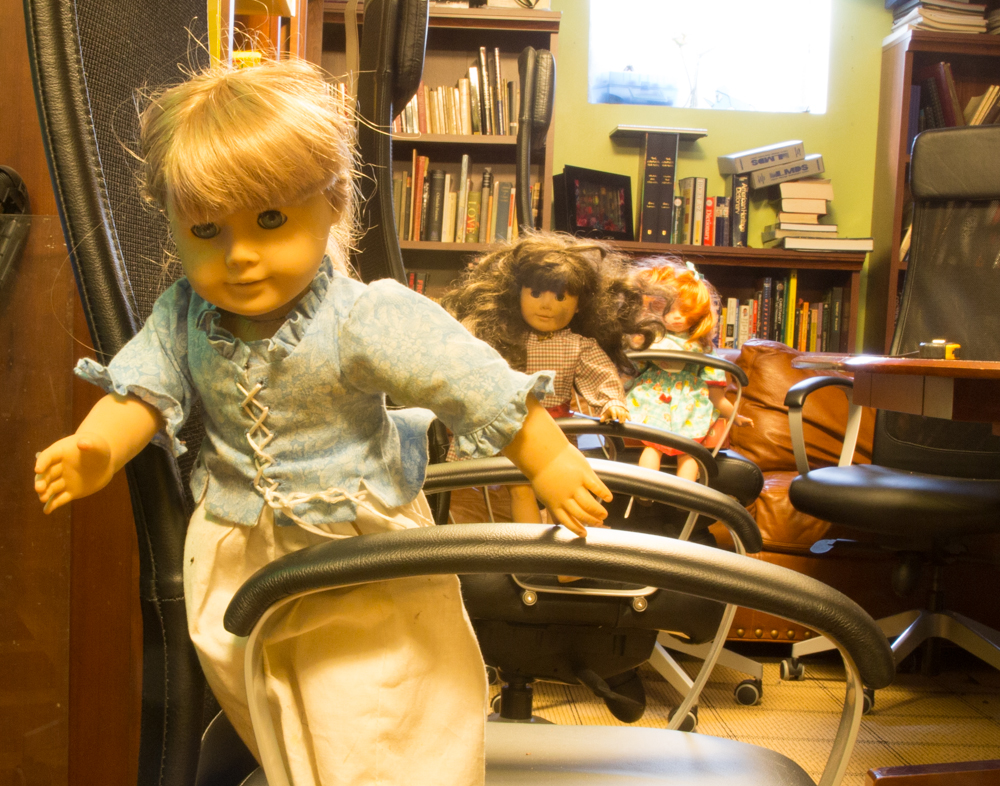
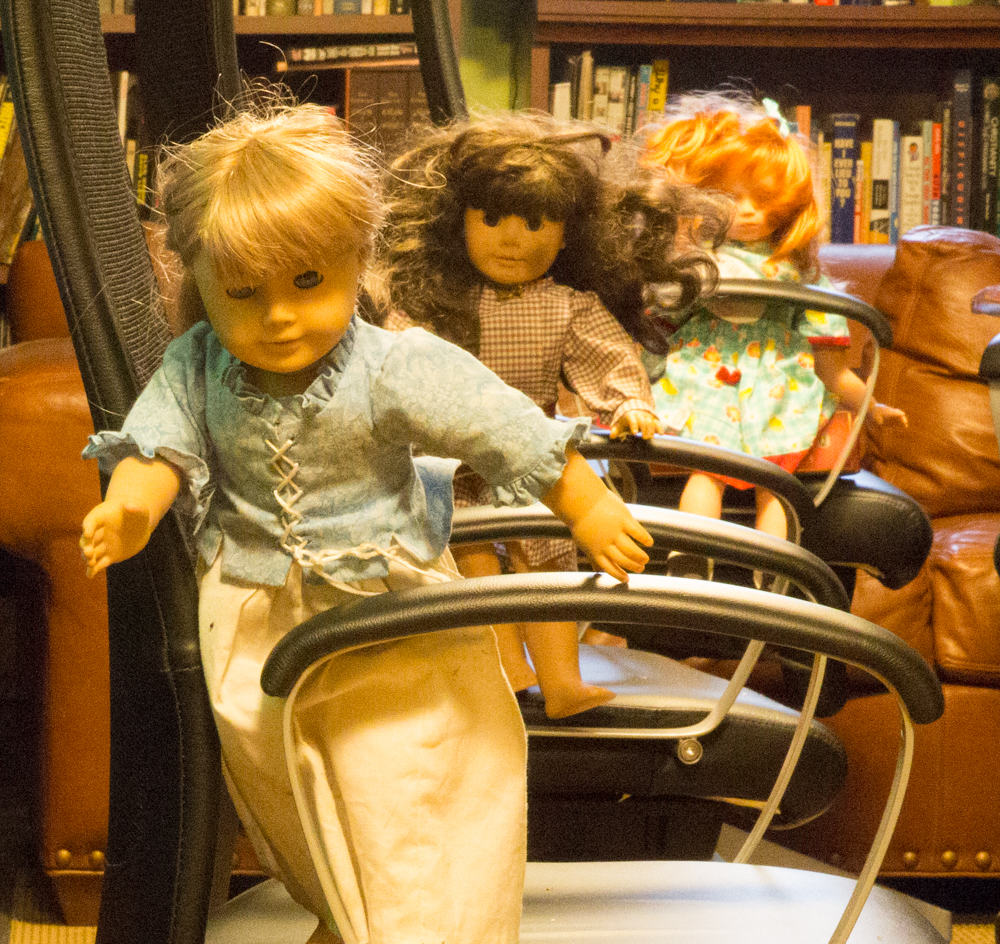
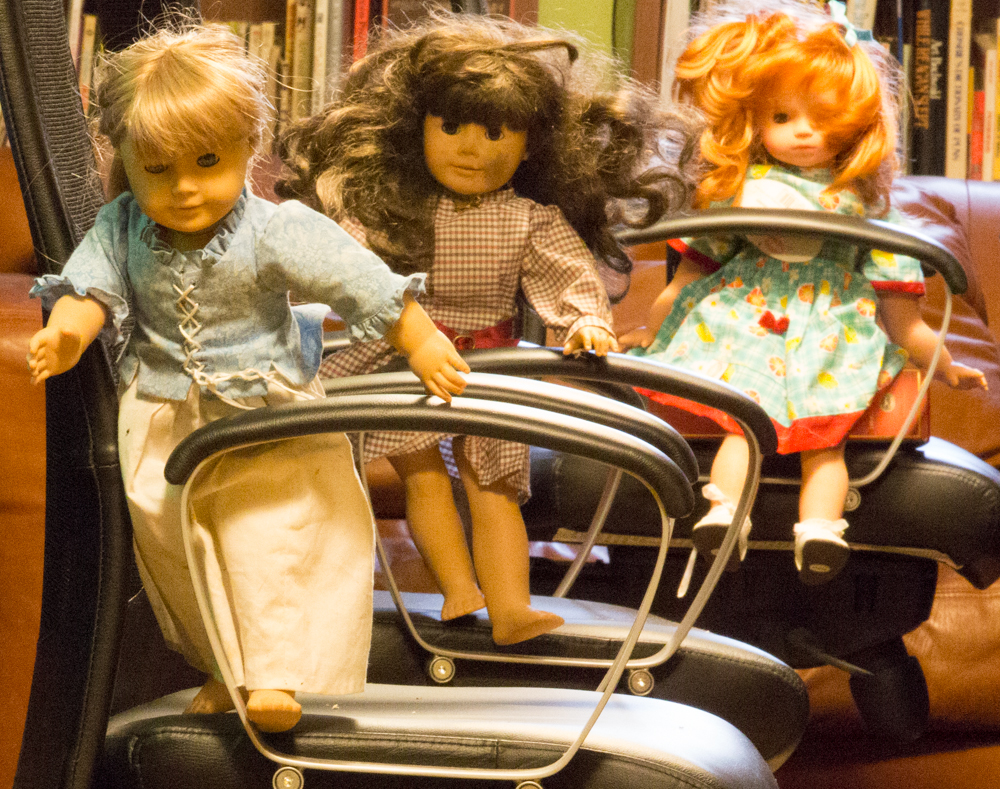
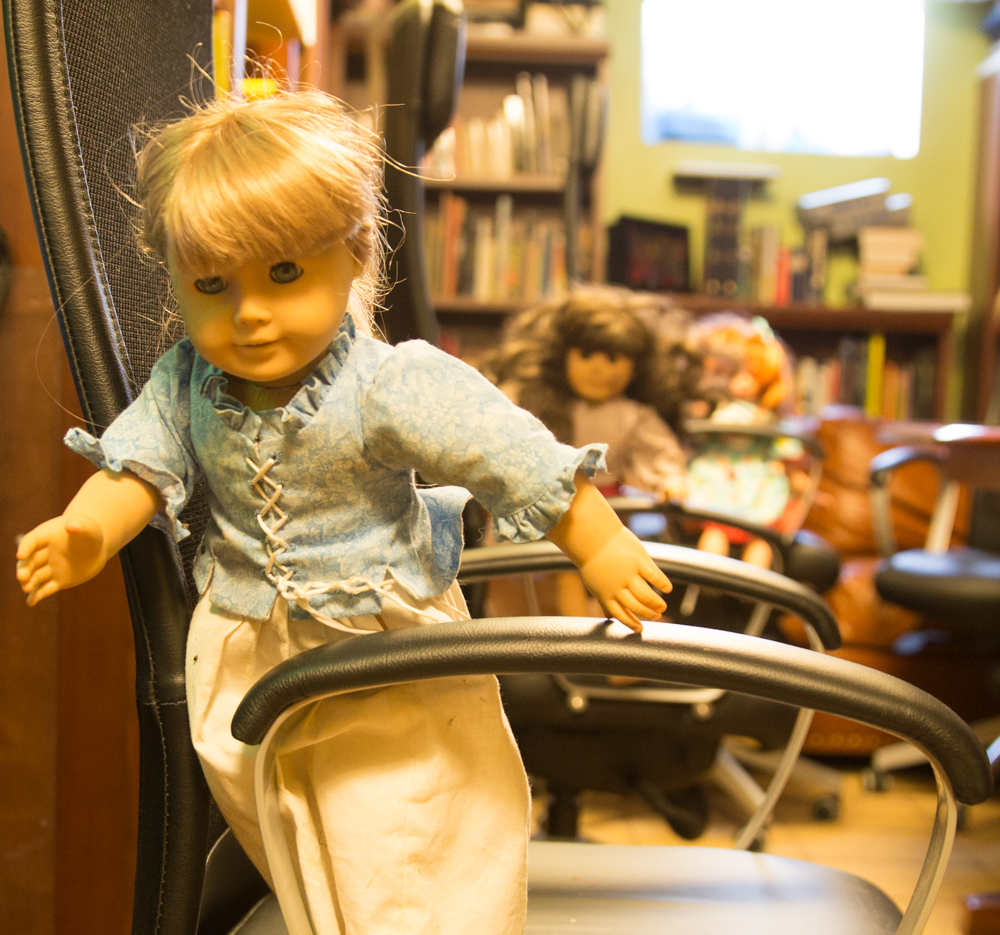
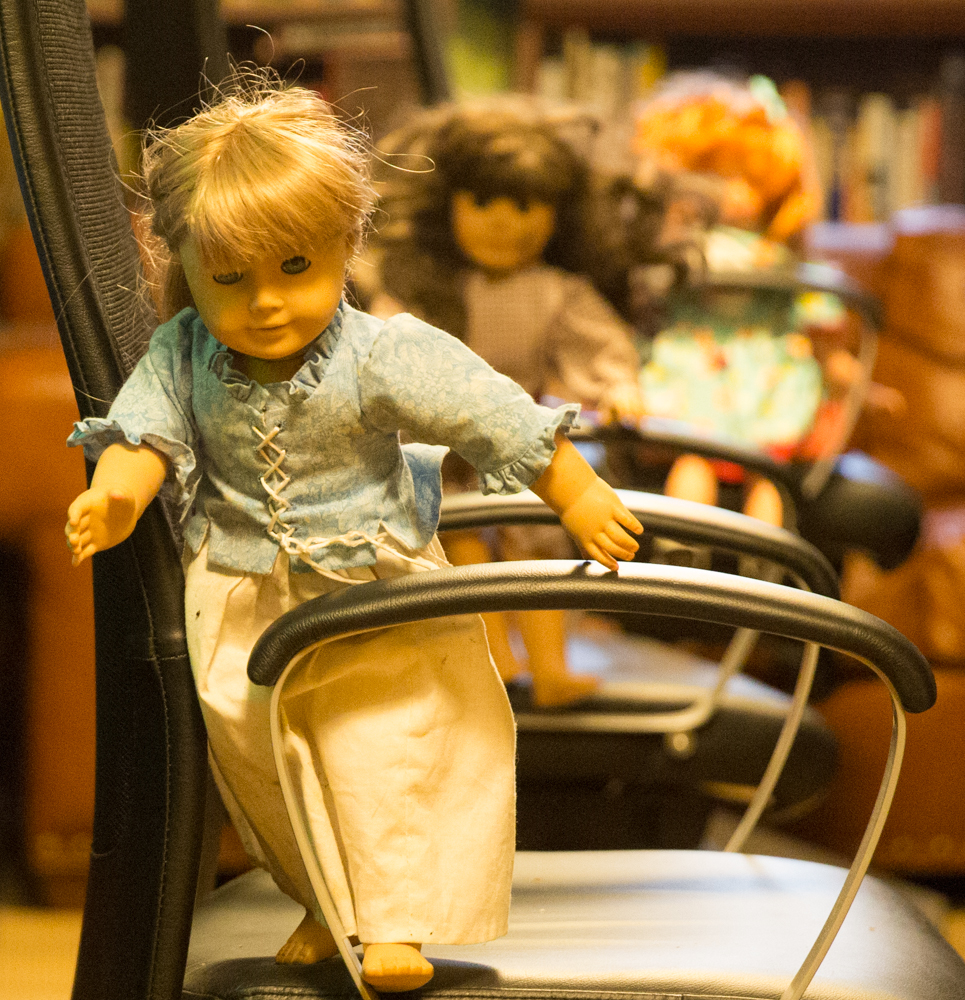
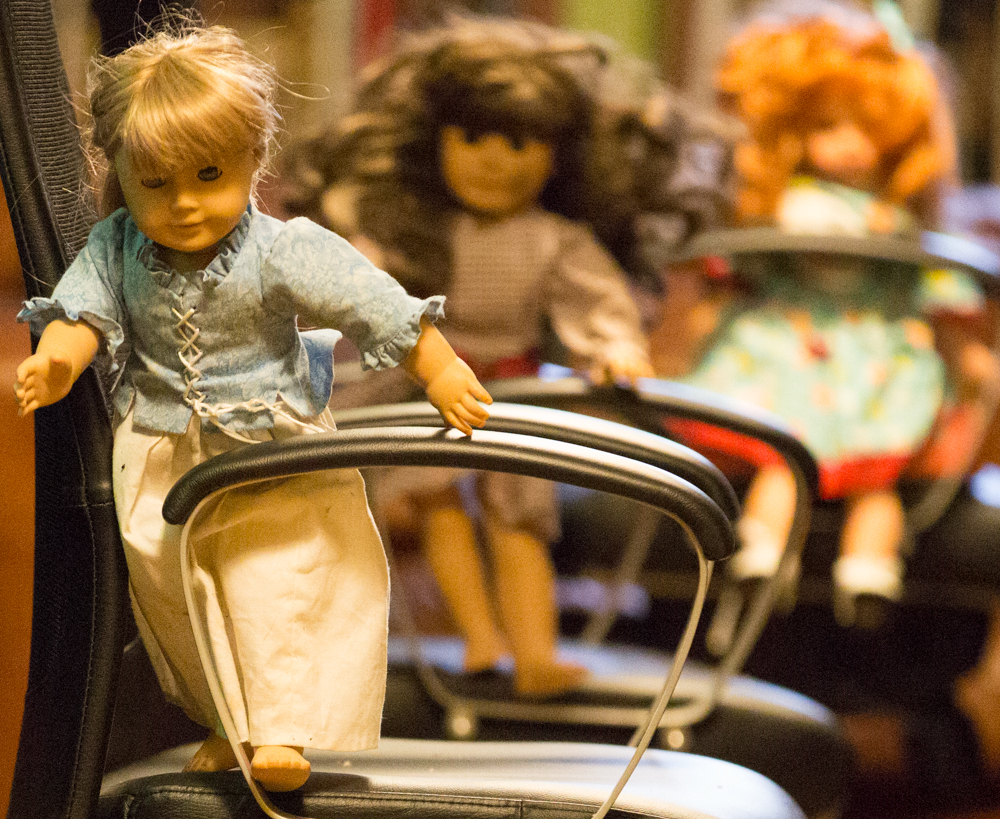
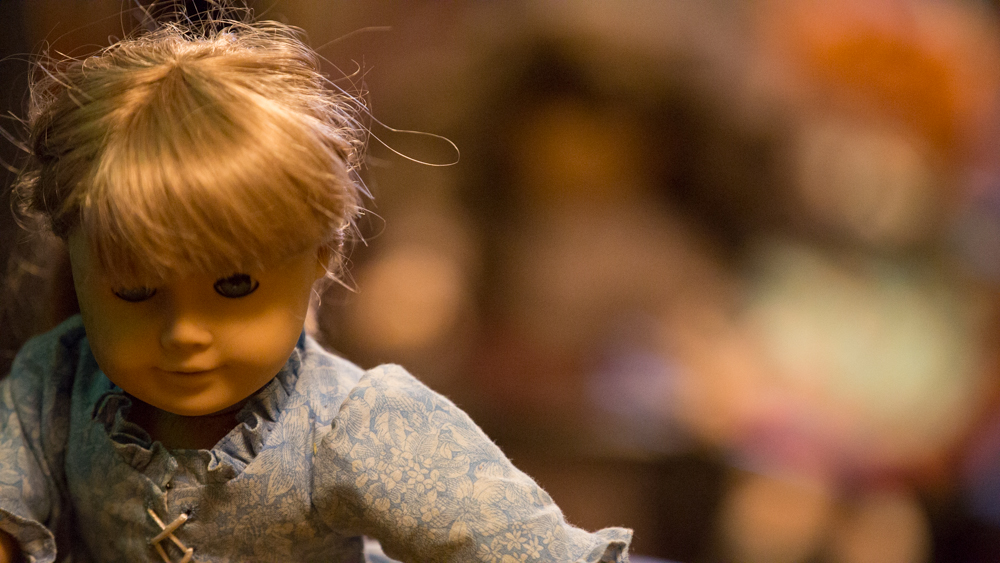
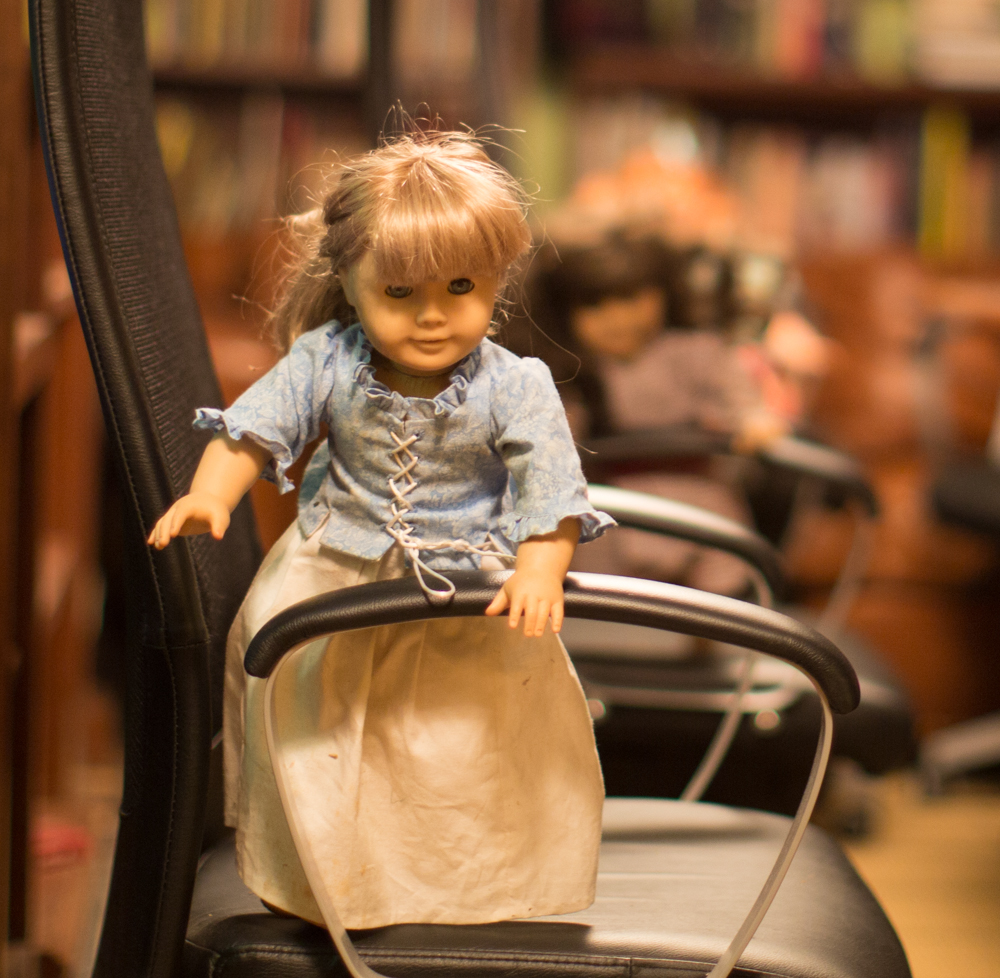
Recent Comments